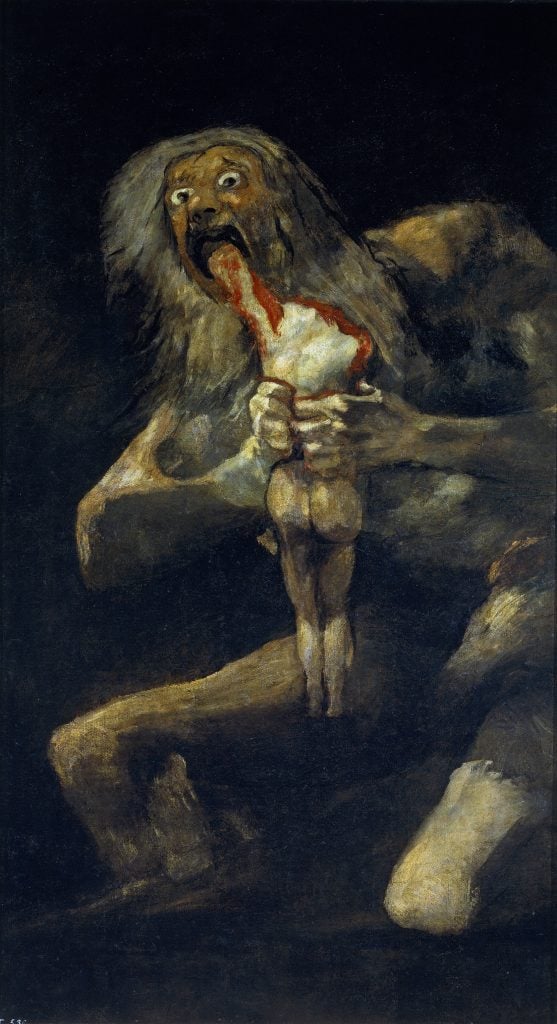Pop Culture
As Seen on ‘Wall Street: Money Never Sleeps’: A Corporate Raider’s Goya
Goya’s gluttonous Saturn reflects the naked avarice of the film’s characters.

What’s a corporate raider to do with his reserve of wealth? Why, he makes a spectacle of it, of course. In Wall Street: Money Never Sleeps (2010), the sequel to 1987’s Wall Street, we’re taken inside the home of hedge fund manager Bretton James (played by Josh Brolin), whose taste—or really, investment—in art is splashed over his lair-like study. There’s a Haring and a Warhol hung on opposite walls, mingled with a Richard Prince and a Julie Heffernan. But the spotlight belongs to a Francisco de Goya canvas, Saturn Devouring His Son (1820–23).
“Goya painted 15 Black Paintings late in his life,” James smugly tells his guest, young trader Jacob Moore (Shia LaBeouf). “Fourteen of them are on view in the Prado. That’s the missing 15th.”

Shia LaBeouf in Wall Street: Money Never Sleeps (2010), with Francisco Goya’s Saturn Devouring His Son (1820–23). Photo: Screen grab / 20th Century Fox.
James adds that his Goya is “an early sketch” for the final work, which might be news to real-life art historians. The Spanish artist did create a sketch of Saturn around 1797, but it was executed in red chalk, unlike the obviously painted work in James’s office. Goya’s Black Paintings—a bleak series of compositions that he painted on the walls of his villa toward the end of his life—also number 14, all of which reside in Madrid’s Museo del Prado.
But we’re quibbling here. There’s a good movie reason for Saturn, which depicts the Roman god ravenously consuming one of his offspring, to be hanging in James’s study.

Francisco Goya, Saturn Devouring His Son (ca. 1819–1823). Collection of the Museo del Prado, Madrid.
This is, after all, a follow-up to a film that popularized the phrase, “Greed is good.” Like its predecessor, Money Never Sleeps continues to explore the naked avarice that propels stock market players, with Michael Douglas’s Gordon Gekko returning to accomplish more financial machinations. “Someone reminded me I once said, ‘Greed is good,'” he tells a roomful of students at one point. “Now it seems it’s legal. Because everyone is drinking the same Kool Aid.”
Goya’s painting further foreshadows the film’s other theme of parenthood. Moore, who is engaged to Gekko’s estranged daughter Winnie (Carey Mulligan), looks to his future father-in-law for financial advice, viewing him as a mentor. Which is ill-advised, considering Gekko has just served eight years in prison for fraud. In a turn that surprises no one, the ex-con swindles his daughter out of her $100-million inheritance, betraying Moore along the way.
And it’s not as if Moore wasn’t warned. As he and Gekko were getting acquainted, the corporate raider, speaking about his daughter, plainly (and graphically) tells the young man: “Parents are the bone on which children sharpen their teeth.” Or, in the case of Gekko—and Goya’s Saturn—vice versa.





